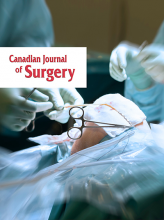Appendectomy remains a perplexing operation. Although it is one of the commonest abdominal operations, most of the accepted surgical tenets and practical wisdom about surgical procedures are completely violated in this procedure. In 20% of patients who undergo emergency operations for suspected appendicitis, the appendix is normal. The standard McBurney incision in the lower right quadrant is usually too small to permit manual or even visual exploration of the abdominal cavity and pelvis. In a society in which over one quarter of the population is significantly obese, the 2.5-cm long incision for appendectomy is a surgical myth. In an obese young woman it is extremely difficult to properly evaluate the ovaries and fallopian tubes through this incision. Once the right lower quadrant incision is made, it is surgical dogma that the appendix is removed whether it is healthy or not. In about 20% of patients with appendicitis, the diagnosis is missed initially, which increases the risk of postoperative complications such as ileus, abscess, adhesions and infertility. Clearly there is room for improvement in the surgical approach to patients with suspected appendicitis.
Much of the recent literature about the management of abdominal pain and suspected appendicitis has been related to diagnostic imaging. A recent article concluded that routine computed tomography in patients who present with suspected appendicitis can improve patient care and reduce the total use of hospital resources.1 Although every patient with acute abdominal pain merits at least consideration of a diagnosis of appendicitis, I am unconvinced that every patient in Canada seen in the Emergency Department will have the opportunity to undergo a rapid appendiceal CT.
The introduction of laparoscopic techniques has provided general surgeons with a new method of diagnosis for patients suspected of having acute appendicitis and has permitted a concurrent therapeutic procedure. Two reports have documented the feasibility and safety of laparoscopic appendectomy. 2,3 However, the proposed advantages of laparoscopic compared with open appendectomy have seemed less compelling than laparoscopic cholecystectomy, and many surgeons still favour open repair because they believe that the overall morbidity is primarily a function of the degree of appendicitis (rather than the operative approach). Some surgeons continue to have difficulty mastering surgery in a remote 2-dimensional world requiring heads-up and video eye–hand coordination without tactile feedback, and the limitations of current laparoscopic instruments mandate considerable practice to master certain skills. Evaluation of cost factors including operating room time and the use of disposable instruments is pertinent.4 Finally, during laparoscopy, diagnostic difficulties may occur in the initial phase of acute appendicitis with only acute mucosal involvement in an apparently normal appendix.
The article in this issue by Temple and her colleagues (page 377) confirms that there are no significant differences in intra-abdominal abscess rates and that complication rates are generally low for laparoscopic appendectomy. There are, however, few wound infections and the return to normal activity is significantly earlier with laparoscopic appendectomy at the minimum price of a few minutes longer operating room time. The authors warn us that the results of their meta-analysis may involve early experience with the laparoscopic technique and that future trials should be performed by those who are experienced laparoscopists to avoid the bias of the learning curve on surgical outcome and operating room time.
The unbridled enthusiasm of the news media and some surgeons for laparoscopic procedures makes some members of the lay public demand this form of surgery. Laparoscopy should never replace good surgical judgement. Diagnostic laparoscopy in patients with suspected appendicitis can avoid unnecessary laparotomies, and I believe it remains an important tool, particularly in young women and obese patients. Surgical techniques including Endoloop sutures and clips instead of the repeated and expensive use of stapling devices can reduce cost of laparoscopic appendectomy. With improvement in laparoscopic techniques and instrumentation, including the introduction of micro-laparoscopy, it is likely that laparoscopy will become an integral part of the evaluation and treatment of patients with clinical symptoms of appendicitis. Although Temple and colleagues state that the definitive study comparing the laparoscopic option with open appendectomy remains to be performed, I believe in selected patients it may be already the procedure of choice.









